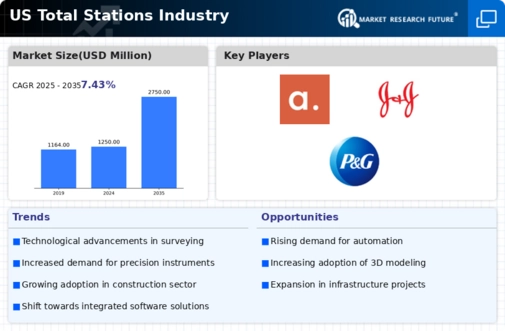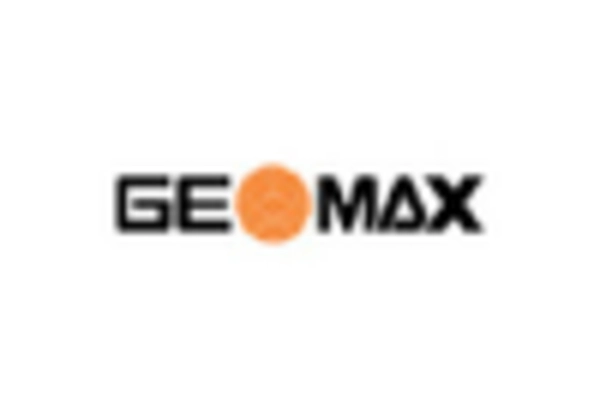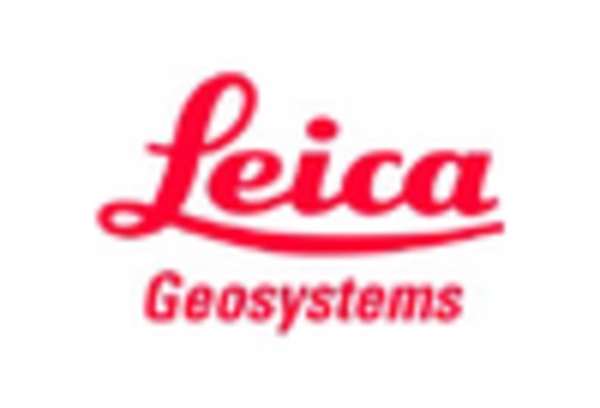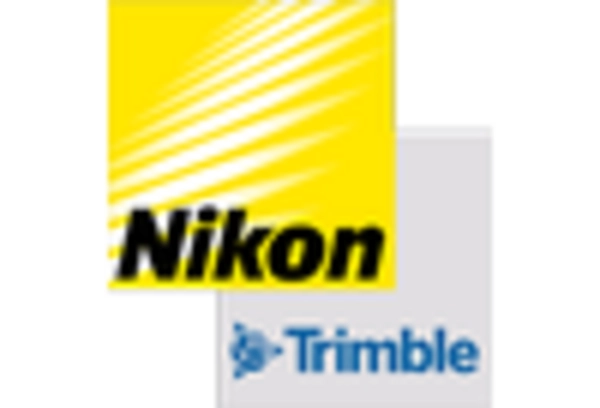Rising Construction Activities
The total stations market is experiencing a notable surge due to the increasing construction activities across the United States. With the construction sector projected to grow at a CAGR of approximately 5.5% from 2025 to 2030, the demand for precise surveying instruments is likely to escalate. Total stations are essential for accurate measurements and data collection in various construction projects, including residential, commercial, and infrastructure developments. As urbanization continues to expand, the need for reliable surveying equipment becomes paramount. This trend indicates a robust growth trajectory for the total stations market, as construction firms seek to enhance efficiency and accuracy in their operations.
Growing Demand for Land Surveying
The total stations market benefits from the growing demand for land surveying services in the United States. As property development and land use planning become more complex, the need for accurate land surveys is paramount. Total stations provide the precision required for boundary determinations, topographic surveys, and construction layout. The market for land surveying is projected to grow at a CAGR of around 4% through 2030, indicating a steady demand for total stations. This trend suggests that surveying firms will increasingly invest in advanced total stations to meet the evolving needs of their clients.
Integration of Advanced Technologies
The integration of advanced technologies into surveying practices is reshaping the total stations market. Innovations such as GPS, GIS, and 3D modeling are being incorporated into total stations, enhancing their functionality and accuracy. This trend is particularly relevant in the U.S., where the demand for high-precision surveying tools is on the rise. As industries adopt these technologies, the total stations market is likely to witness increased sales and adoption rates. The ability to provide real-time data and improved efficiency positions total stations as indispensable tools in modern surveying applications.
Environmental Regulations and Compliance
The total stations market is also influenced by the increasing emphasis on environmental regulations and compliance. As industries face stricter environmental standards, accurate surveying becomes essential for ensuring compliance with land use and environmental impact assessments. Total stations play a critical role in providing the necessary data for these assessments, thereby driving their demand. The market is likely to see growth as companies invest in total stations to facilitate compliance with regulations, ensuring that projects adhere to environmental guidelines while maintaining efficiency in surveying practices.
Government Investments in Infrastructure
Government initiatives aimed at enhancing infrastructure are significantly impacting the total stations market. The U.S. government has allocated substantial budgets for infrastructure projects, with an estimated $1.2 trillion earmarked for improvements over the next decade. This investment is expected to drive demand for total stations, as these instruments are crucial for surveying and mapping in large-scale projects such as highways, bridges, and public transportation systems. The total stations market stands to benefit from this influx of funding, as contractors and engineers increasingly rely on advanced surveying technology to meet project specifications and timelines.
















Leave a Comment